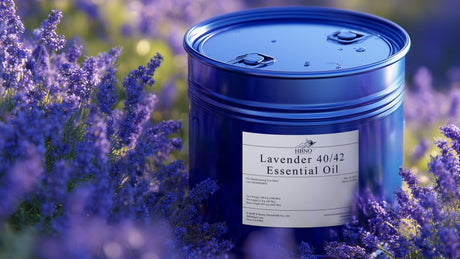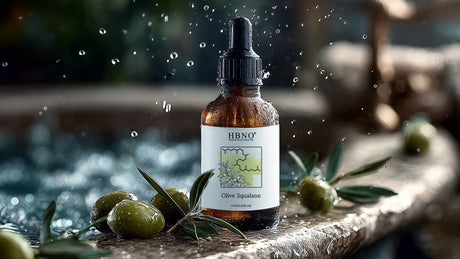Culinary Organic Lavender Essential Oil brings a unique floral depth to the kitchen, transforming everyday dishes into aromatic creations. With the right approach, this fragrant herb becomes a versatile ingredient that enhances everything from desserts to savory roasts.
But a common question many home chefs ask is, can you bake with lavender essential oil? The answer is yes-when used sparingly and sourced from a food-grade essential oil, lavender can add a sophisticated twist to cookies, cakes, breads, and more.
The Flavor of Lavender in Cooking
Lavender's flavor is floral, slightly minty, and reminiscent of rosemary with subtle citrus notes. Its aroma is potent, so even a small amount can dramatically change the flavor of a dish-making it important to use it sparingly.
The dried buds of Food Grade Lavender are the most common form used in recipes. Just like with other potent herbs, the dried form is more concentrated than fresh, so it's usually recommended to use one-third of the quantity when substituting dried for fresh.

How to Use Lavender in Food: Methods and Tips
Understanding How to Use Lavender in Food opens up a world of creative possibilities. Below are a few effective and delicious ways to incorporate food flavoring into your culinary repertoire:
1. Infused Sugars and Syrups
Infusing sugar with dried lavender buds creates a beautifully scented sweetener for baking or tea. Store the sugar in a sealed container for at least a week to allow the flavor to fully develop.
Lavender syrup is another versatile creation-combine equal parts sugar and water, bring to a boil, add a tablespoon of dried Food Grade Lavender, simmer for 10 minutes, and then strain. This syrup adds floral complexity to iced tea, lemonade, cocktails, or even fruit salad.
2. Baking with Lavender
Lavender pairs exceptionally well with baked goods, especially when used with complementary flavors like lemon, honey, or vanilla. Try adding ground dried lavender to shortbread cookies, scones, or cakes for a subtle, aromatic note.
To avoid bitterness, grind the buds finely before mixing them into dough or batter. You can also infuse milk or cream with lavender and strain it before adding it to your recipe, which provides flavor without adding texture.
3. Savory Dishes
While lavender is more commonly used in sweets, it can also enhance savory soups. It is one of the herbs in Herbes de Provence-a classic French blend used to season meats, roasted vegetables, and sauces.
Rub finely ground Food Grade Lavender onto chicken, lamb, or pork, or steep it into a broth or cream sauce to impart a gentle floral layer. Just remember, a pinch goes a long way.
4. Beverages and Cocktails
Lavender lends a refreshing lift to beverages, both hot and cold. Infuse it into simple syrups for use in cocktails like lavender lemon spritzers or a floral twist on a gin and tonic.
For non-alcoholic options, lavender-infused tea, lemonade, or sparkling water offer elegant, aromatic alternatives. Always strain the buds out after steeping to prevent the drink from becoming too strong.

Cooking with Lavender Oil
When it comes to Lavender Oil, only food-grade extracts should ever be used for culinary purposes, and even then, with caution. This concentrated oil is incredibly potent and should be used sparingly-usually a single drop is more than enough for a whole recipe.
For instance, a drop of Lavender Oil can be blended into whipped cream, added to frosting, or stirred into chocolate ganache. Alternatively, it can be diluted into a carrier oil like olive oil and brushed lightly over grilled vegetables or seafood.
Important note: avoid using essential oils labeled for aromatherapy or topical use in food, as they may not be safe for ingestion.
Pairing Lavender with Other Ingredients
To successfully use Lavender for Food, it helps to understand what flavors it complements. Here are some top pairings:
- Citrus: lemon, orange, and grapefruit help balance lavender's floral strength
- Sweeteners: honey, vanilla, and sugar enhance its gentle sweetness
- Herbs: rosemary, thyme, and mint match its earthy undertones
- Fruits: berries, peaches, and pears blend beautifully with lavender's aroma
These combinations are especially effective in layered recipes like tarts, sorbets, or fruit glazes.

Storage and Preparation
Keep your Food Grade Lavender in an airtight container in a cool, dark place. Whole dried buds retain their flavor for up to a year. If you're using fresh lavender, rinse the sprigs gently and dry them before use.
For ease of use, you can grind dried lavender with a mortar and pestle or spice grinder. Always sift or strain afterward to ensure a smooth texture in baked goods and sauces.
Culinary Inspiration: Recipes to Try
Here are some simple ideas for getting started with lavender in your kitchen:
- Lavender Shortbread Cookies: Add 1 teaspoon of finely ground dried lavender to your favorite shortbread dough.
- Lavender Honey Butter: Mix softened butter with honey and a small pinch of lavender for spreading on toast or muffins.
- Lavender Lemonade: Steep lavender buds in hot water with honey, then combine with fresh lemon juice and chill.
- Herb-Crusted Lamb with Lavender: Combine lavender, rosemary, thyme, salt, and olive oil as a rub. Roast until tender.
Final Thoughts
Used thoughtfully, Food Grade Lavender elevates your culinary creations with grace and sophistication. Whether you're infusing it into sugar, folding it into dough, or drizzling lavender syrup over your favorite dessert, the possibilities are as vast as they are fragrant. For chefs, bakers, or formulators sourcing high-quality ingredients, HBNO Bulk Food Grade Lavender offers a reliable and aromatic option that enhances every recipe with purity and consistency. Expand your range with professional Private Label Product Developer for bulk and retail-ready products.
Learning How to Use Lavender in Food isn't just about flavor-it's about exploring an ingredient that connects tradition, creativity, and sensory experience. Start small, pair it wisely, and you'll discover a floral accent that's anything but ordinary.
Citations:
- Effects of aromatherapy on sleep quality and anxiety of patients
- The Effectiveness of Aromatherapy with Lavender Essential Oil in Relieving Post Arthroscopy Pain
- Effect of lavender aromatherapy on menopause hot flushing: A crossover randomized clinical trial
- Effect of aromatherapy massage on anxiety, depression, and physiologic parameters in older patients with the acute coronary syndrome: A randomized clinical trial



